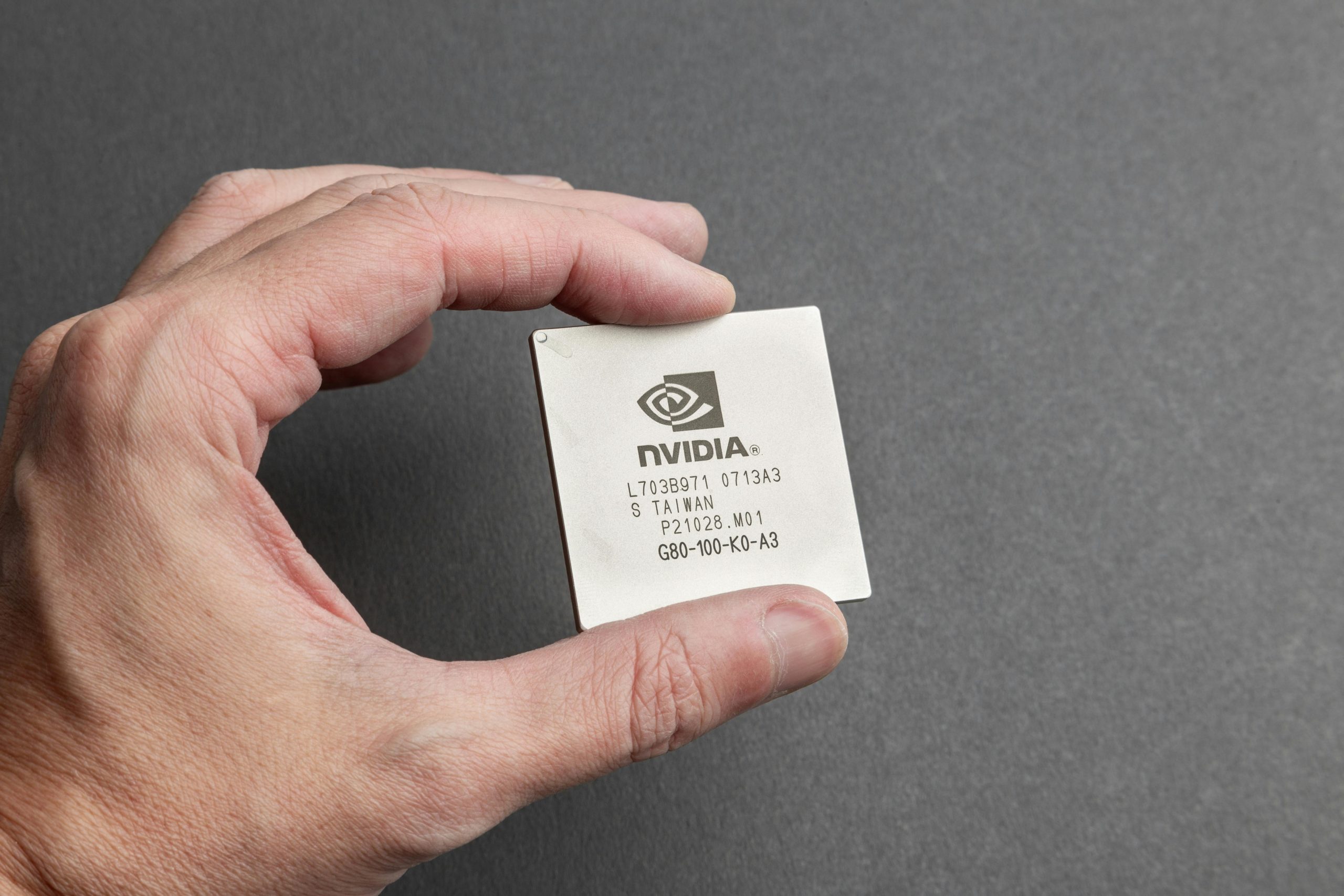
ASML Holding: The Linchpin of Semiconductor Fabrication
ASML Holding operates at a fundamentally different, yet equally non-negotiable, stratum of the AI ecosystem. Based in Europe, this entity is the world’s sole producer of the **Extreme Ultraviolet (EUV) lithography machines** necessary to create the most advanced logic and memory chips—the very components that define the leading edge of AI processing power. Their technological monopoly makes them the ultimate bottleneck-remover for the entire foundry sector.
The Indispensable Role in Advanced Chip Production
The chips that fuel the massive GPU clusters used by Nebius, or any modern CPU/AI accelerator, require the most complex manufacturing techniques known. ASML’s lithography systems are the enabling technology. Without them, the continued shrinking of transistors and the resulting density increases promised by Moore’s Law would stall. This indispensable status establishes a durable demand floor. Foundries must continuously acquire, install, and upgrade their ASML fleet—often purchasing machines costing hundreds of millions of dollars—just to remain competitive in the race for the next process node. This dependency creates incredible insulation against typical market pressures. Investors interested in the foundation of all tech should study **semiconductor capital expenditure cycles** to track ASML’s revenue flow.
Market Valuation and Established Industrial Moat
Because of this virtually unassailable position in a foundational technology, ASML commands a valuation reflecting a deep, mature industrial moat. Its revenue is inherently tethered to the multi-year, multi-hundred-billion-dollar investment cycles of the world’s chip giants. While the growth rate may not match the triple-digit revenue velocity of a new cloud player, it is underpinned by a technological exclusivity that takes decades and billions in R&D to even attempt to replicate. ASML’s recent performance confirms this stability. Following their **Q3 2025 earnings release on October 15th**, the stock rallied, ending up **2.7%** on the day. Their Q3 results, which included **$6.41 in EPS, beating analyst consensus**, and signaling full-year 2025 sales growth around **15%**, showcase a company executing reliably within its guided parameters, even as some segment revenues showed slight sequential softness. Management provided a strong signal of future confidence, stating they **do not expect 2026 total net sales to fall below 2025 levels**. This predictability is a hallmark of their business.
Comparative Analysis of Business Models and Market Positioning. Find out more about Nebius Group vs ASML investment profile comparison.
The defining split between Nebius and ASML is their proximity to the end-user demand for AI. Nebius captures value near the *consumption* point—the actual running of algorithms. ASML captures value much further upstream, from the *manufacturing* of the tools required to create that computation. This difference frames the entire investment thesis.
Direct vs. Indirect Exposure to End-User AI Demand
Nebius has **direct exposure**. When a research group trains a new model or an enterprise runs a massive simulation on their platform, Nebius bills for that usage time. Their financial outcome is tied to the *utilization rate* of AI services right now. For example, their Q2 revenue of over $105 million speaks directly to high current usage. ASML has **indirect exposure**. Their revenue is tied to the foundry’s strategic conviction that *future* demand will justify spending billions today on a lithography tool that will be operational in two years. While the AI boom is the ultimate driver, ASML’s quarterly bookings reflect strategic capacity planning by TSMC, not immediate server load. Their Q3 net bookings were **€5.4 billion**, with **€3.6 billion** specifically from EUV systems, indicating that long-term capacity building is proceeding as expected. This indirect link provides stability but can mean slower reaction times to sudden shifts than the service providers feel.
Scalability and Latency Considerations in Cloud Offerings
For Nebius, the operational tightrope is one of physical execution: Can they secure enough power, acquire enough GPUs, and deploy new data centers fast enough to meet contracts like the one with Microsoft, all while maintaining ultra-low latency? Their growth is physical, fast, and bottlenecked by construction and supply chains outside their direct control, though they are mitigating this with massive CapEx projections. ASML’s scaling challenge is purely one of advanced engineering and R&D—a process measured in years. Their focus is on reliably delivering the next generation of manufacturing technology, like the rumored advancements in High-NA EUV. The question for Nebius is “Can we build the cloud fast enough to serve today’s demand?”; the question for ASML is “Can we deliver the next generation of manufacturing physics reliably to meet the demand three years from now?” The stability of ASML’s multi-year R&D cycle suggests a more predictable path than the hyper-deployment schedule of the cloud builders.
Financial Health and Growth Capital Strategy Examination. Find out more about Nebius Group vs ASML investment profile comparison guide.
Looking at the balance sheets reveals two companies in vastly different life stages, each with unique capital needs that an astute investor must weigh.
Profitability Trajectory: Adjusted Metrics Versus GAAP Reality for Nebius
The financial story for Nebius is one of prioritizing market share capture over immediate accounting conformity. While achieving **positive adjusted EBITDA** shows healthy underlying unit economics on existing capacity, the company is still booking significant losses under Generally Accepted Accounting Principles (GAAP). The **$91.5 million net loss** in Q2 2025, despite explosive revenue growth, highlights the massive depreciation, interest, and operating expenses required to sustain their hyper-growth CapEx plans. This financial structure demands continuous positive market sentiment to support a valuation based on future profitability rather than current earnings. The company’s debt-to-equity ratio of **0.31** is relatively low, suggesting they can still leverage debt if needed, but their ability to manage the cash burn until they hit scale is paramount.
Capital Intensity and Debt Servicing for Infrastructure Expansion
Nebius’s strategy—securing power, building data centers, financing hardware—is intensely capital-intensive. This requires constant financing, often through equity raises, like the private placements mentioned, and strategic use of debt. The long-term financial success here is entirely dependent on the **Return on Invested Capital (ROIC)** for these new facilities dramatically outpacing the cost of that capital. ASML, while needing immense CapEx for its own R&D and machinery manufacturing base, faces a different calculus. Their capital intensity is balanced by the high margins and pre-payment structures common in equipment sales. For ASML, the Q3 2025 report showed a **net margin of 27.08%** and a **return on equity of 47.74%**. This level of profitability provides a massive internal funding engine for R&D and shareholder returns, as demonstrated by their recent **quarterly dividend increase to $1.857 per share**. This financial solidity contrasts sharply with the growth-at-all-costs model often seen in the infrastructure providers. For a deeper dive into how this financial stability translates to shareholder value, look into the mechanics of **ASML’s dividend policy**.
Market Sentiment, Analyst Coverage, and Stock Performance Benchmarks. Find out more about Nebius Group vs ASML investment profile comparison tips.
The market’s perception of these two companies right now, on this day in October 2025, reveals a clear split between the excitement of explosive growth and the confidence in established, foundational strength.
Recent Trading Momentum and Outperformance Against Peers
**Nebius Group’s stock** has experienced one of the most remarkable rallies of 2025. Driven by the Microsoft deal and soaring AI demand, its stock has seen gains that, as reported by some sources, **significantly surpass benchmarks** like Nvidia’s performance over the same period, with a reported year-to-date gain exceeding **300%**. This momentum suggests a significant portion of the market is willing to pay a high premium for direct, high-octane exposure to AI *usage*. Meanwhile, **ASML** is also showing robust upward movement, having jumped **45% in the last three months** leading up to this report. While the percentage gain is smaller than Nebius’s volatile surge, it reflects extreme confidence in the sustainability of global chipmaking CapEx. The enthusiasm in October 2025 is partly fueled by their Q3 results and the forecast suggesting **2026 sales won’t decline**.
Expert Opinion and the Dynamics of Institutional Investment Flow
Analyst coverage reflects this divergence. ASML remains a fixture in industrial and semiconductor technology reports, valued for its moat and predictable revenue streams, with a consensus rating hovering around “Moderate Buy”. Nebius, however, has become a favorite among growth-oriented houses, with numerous recent reports reiterating “Buy” ratings based on the compounding effect of their capacity expansion and contract wins. The institutional capital flow mirrors this: steady, long-term positions are maintained in the established equipment provider, while more aggressive, momentum-driven allocations chase the hyper-growth in the service provider.
Future Outlook and Concluding Investment Thesis Development. Find out more about learn about Nebius Group vs ASML investment profile comparison insights.
Ultimately, deciding which company represents the “better” artificial intelligence stock hinges on your personal investment profile: your time horizon, your belief in the *sustainability* of the current AI usage boom, and your tolerance for balance sheet risk versus technological risk. Both are crucial cogs in the machine reshaping the global economy.
Mitigating Risks in an Overheated Technology Sector
For the high-flyer **Nebius Group**, the risks are centered on execution and market maturity. Can they realistically continue deploying infrastructure fast enough to satisfy their commitments and outpace better-funded incumbents? How will the market react if that blistering revenue growth inevitably slows as the initial wave of AI adoption stabilizes? Volatility remains high, especially given the talk of an “AI bubble,” which tends to punish unprofitable, high-cash-burn companies the hardest. For the bedrock company, **ASML Holding**, the risks are more systemic. Their primary threat comes from a severe, prolonged downturn in global semiconductor capital expenditure—a macroeconomic event that would put a pause on foundry expansion. Additionally, a true, unforeseen technological leap that somehow bypasses the need for EUV-level lithography would dismantle their moat, though this remains a distant, theoretical risk given the multi-trillion-dollar investment already sunk into the current roadmap.
Long-Term Viability in the Evolving Computational Landscape
The long-term viability of Nebius rests on its ability to successfully transition from a cash-consuming growth entity to a **profitable, scaled hyperscaler**, embedding its proprietary platform into the mission-critical workflows of global AI developers. Their success will be defined by establishing an enduring competitive advantage based on service quality and network effects around their AI Studio. For ASML, viability is practically assured as long as the world demands smaller, faster, more powerful microchips. Their role is etched into the physics of semiconductor manufacturing, ensuring they remain the critical enabler for every single future generation of AI hardware. Their long-term outlook is cemented by the industry’s projected growth, with the total addressable market for lithography expected to be substantial by 2030. They are a cornerstone of the **October 2025** technology story and for the decade to come.
Actionable Takeaways for the Investor on October 24, 2025. Find out more about Best artificial intelligence stock for infrastructure providers insights.
Here is the breakdown for putting this knowledge into practice:
- The Growth Seeker (Nebius Profile): If you have a high risk tolerance and a conviction that AI *usage* will continue to compound faster than infrastructure can be built, Nebius offers the highest potential upside. Actionable Tip: Watch the upcoming **Q3 2025 earnings report** (scheduled for October 29th) closely. Any sign of slowing growth in customer acquisition or an unexpectedly high cash burn rate could signal immediate volatility, meaning you need a tight risk management plan.
- The Stability Seeker (ASML Profile): If your goal is long-term, measured compounding backed by a technological monopoly, ASML is the choice. Their recent Q3 results confirmed operational strength and a commitment to shareholder returns via dividends. Actionable Tip: Monitor the foundry CapEx environment globally. While they see strong 2026 guidance, a major, unexpected geopolitical shift affecting global chip investment remains the primary factor that could slow their steady climb.
- The Balanced Portfolio: The wisest move for many investors is to recognize that both are essential. Nebius needs ASML’s machines to exist; ASML needs Nebius’s customers to drive foundry demand. Consider allocating capital to both to capture upside from both the *creation* and *consumption* sides of the AI boom, mitigating the specific operational risks tied to one segment. . Find out more about ASML indispensable role in leading-edge semiconductor manufacturing insights guide.
Which side of the AI equation are you leaning toward today, October 24, 2025? Are you betting on the speed of the cloud landlord or the monopoly of the machine maker? Share your perspective in the comments below—your insights on AI cloud economics are valuable to the entire community!
For further context on the foundational technology driving ASML’s dominance, take a look at resources detailing EUV lithography in chipmaking, and for a broader look at the spending fueling Nebius, review the latest analyses on global semiconductor capital expenditure cycles.
The rapid evolution in this sector demands constant vigilance. Keep watching how these two titans—one building the engine, the other building the factory—shape the technological future.










